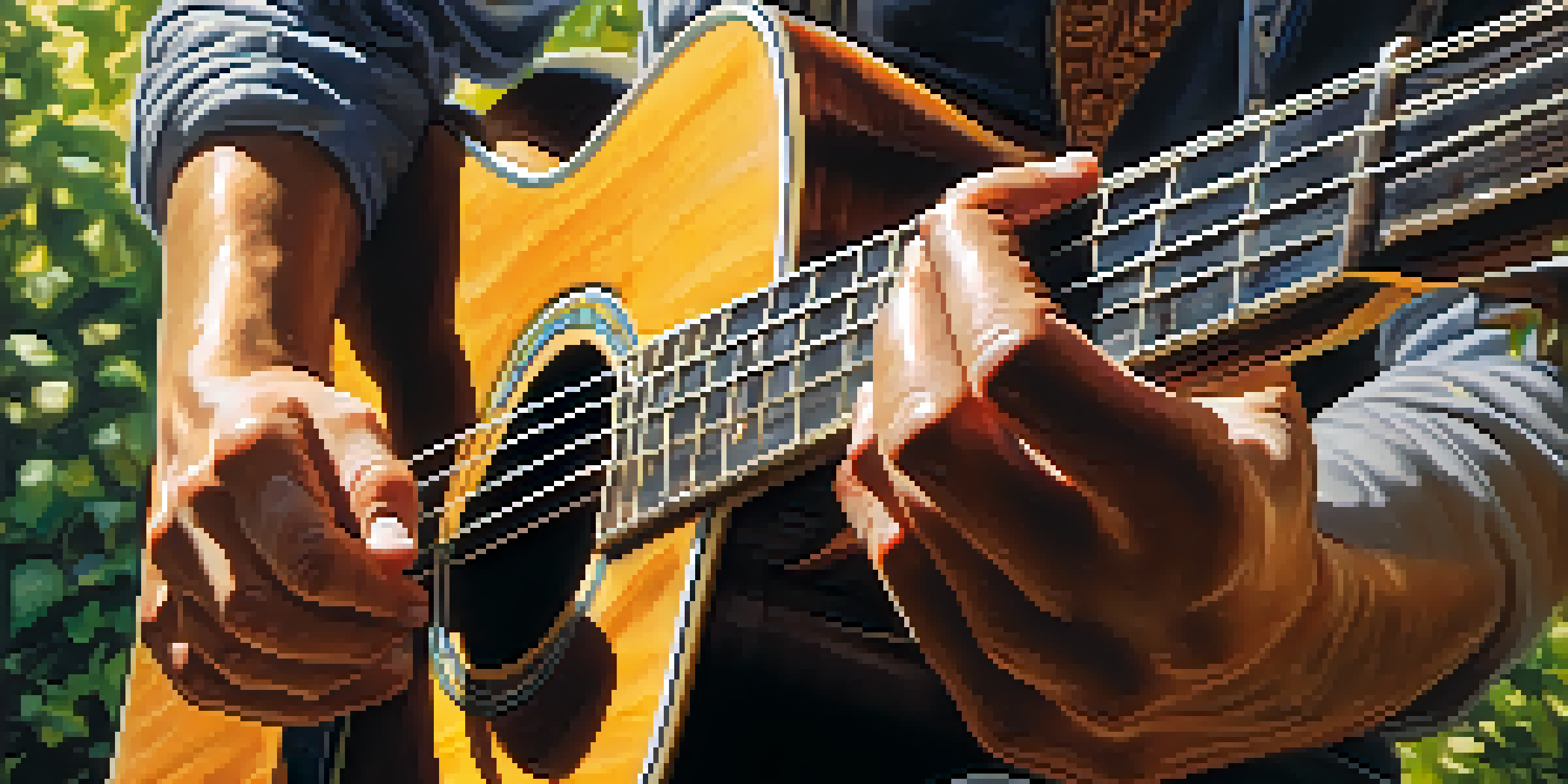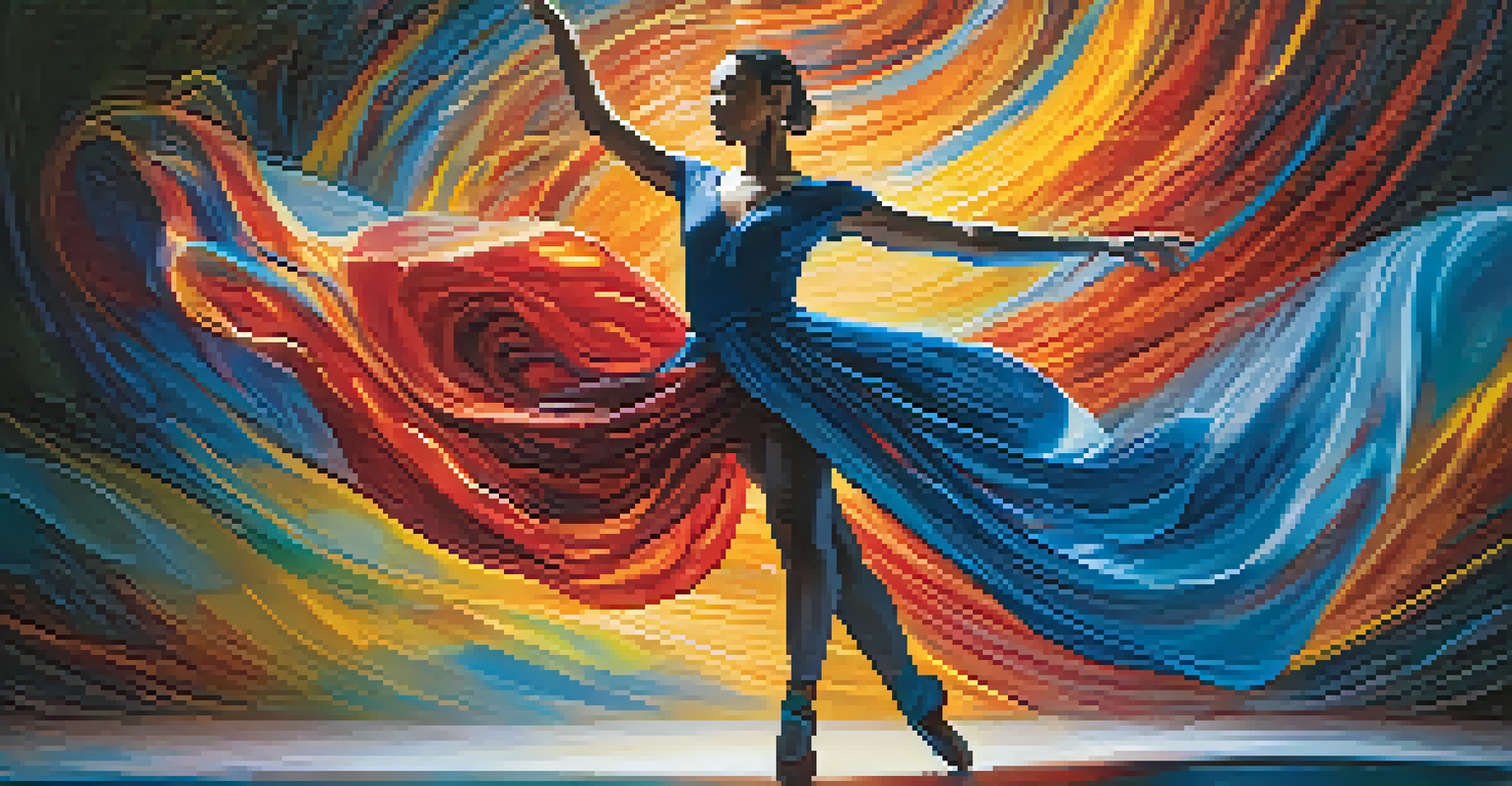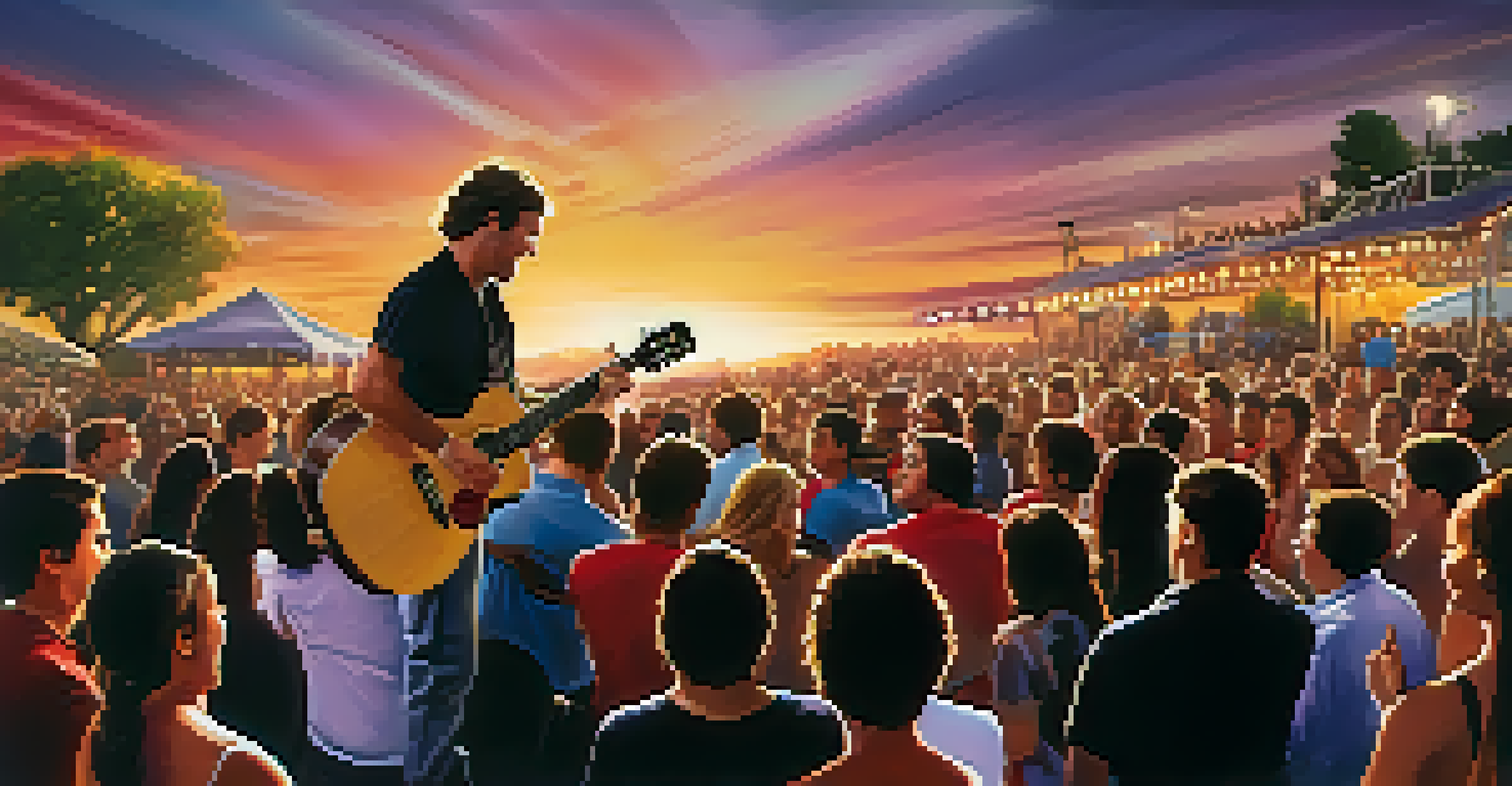Guitar Techniques Inspired by Dance: A Unique Fusion

The Dance of Sound: Rhythm in Guitar Playing
Just as dancers move to the beat, guitarists must also embrace rhythm. Understanding how to play in sync with a rhythm can transform your guitar compositions. Think of your strumming patterns as dance steps; each stroke should flow naturally into the next, creating a cohesive movement.
Music can change the world because it can change people.
For instance, consider the bossa nova style, which incorporates a gentle sway that mirrors traditional Brazilian dance. By adopting these rhythmic nuances, guitarists can create a more engaging and dynamic sound. This fusion not only enhances the music but also allows the player to connect more deeply with the audience.
Moreover, experimenting with different time signatures can add a unique flair to your playing. Just like a dancer might switch between waltz and tango, varying your rhythms can keep your audience on their toes and make your performances more memorable.
Melodic Expression: Drawing from Dance Movements
Melody in music often parallels the fluidity of a dancer’s movements. Just as dancers express emotions through their choreography, guitarists can convey feelings through melodic lines. By incorporating techniques inspired by dance, such as legato (smoothly connecting notes), you can evoke a sense of grace in your playing.

For example, consider the way a ballet dancer glides across the stage—each movement is deliberate and flowing. Similarly, when you play a melody with a legato technique, it creates a seamless transition that captures the listener's attention. This approach can make your guitar solos feel more expressive and emotionally resonant.
Rhythm: The Heart of Guitar Playing
Embracing rhythm transforms guitar compositions, allowing players to create engaging and dynamic sounds.
Additionally, using dynamics—playing softer or louder—can mirror the crescendos and decrescendos found in dance performances. This contrast not only enhances the storytelling aspect of your music but also invites the audience to experience the highs and lows alongside you.
Footwork Fundamentals: Incorporating Your Body
Just as footwork is essential in dance, so is body movement in guitar playing. Engaging your body can enhance your performance and connect your playing to the rhythm. Think of how dancers use their feet to emphasize beats; guitarists can use their feet to tap or stomp in time with the music.
The dance is a poem of which each movement is a word.
Integrating simple foot tapping or even dance-inspired movements can add a visual element to your performance. For instance, consider how flamenco guitarists incorporate foot stomps that resonate with the guitar’s rhythm. This not only enhances the performance but also captivates the audience, inviting them into the experience.
Moreover, using your body to express the music can create a deeper connection with your instrument. The synergy between your movements and the guitar can lead to more authentic performances, where the music feels like an extension of your physical expression.
Improvisation: Freeing Your Inner Dancer
Improvisation in music can be likened to freestyle dance—both require spontaneity and confidence. When you allow yourself to play without strict adherence to a plan, you tap into a more natural flow. This freedom can lead to unique musical expressions that are reminiscent of a dancer’s improvisational movements.
Consider the way a dancer might explore different styles in an improvisational set. Similarly, guitarists can experiment with scales and modes, allowing their creativity to flow freely. This approach can yield unexpected and exciting results, making each performance a unique experience.
Melodic Expression Through Dance
Using techniques inspired by dance, such as legato and dynamics, enhances emotional storytelling in guitar music.
By embracing improvisation, you can also discover new techniques along the way. Just as dancers learn to adapt their movements on the spot, guitarists can develop their skills and expand their style through the practice of improvisation.
Combining Genres: A Dance of Musical Styles
The beauty of music lies in its ability to blend genres, much like a dance that fuses different styles. Combining elements from various musical genres can create a rich tapestry of sound. For instance, think of a guitarist who incorporates jazz chords while playing a rock melody; it’s a fusion that energizes both the performer and the audience.
This cross-pollination mirrors how dance styles evolve when dancers incorporate movements from different traditions. By exploring various genres and techniques, guitarists can create fresh and exciting soundscapes that resonate with diverse audiences. This approach invites listeners on a journey through the music, much like a captivating dance performance.
Additionally, embracing diverse influences can lead to innovation in your playing. Just as dancers often collaborate with musicians from different backgrounds, guitarists can benefit from engaging with various genres to enrich their musical identity.
Storytelling Through Music: Dance as a Narrative
Dance is a powerful form of storytelling, and music plays a crucial role in conveying that narrative. Similarly, guitarists can harness the art of storytelling in their music by drawing inspiration from dance. Each note and chord can be viewed as a part of a larger tale, where the guitar serves as the voice of the narrative.
For example, consider how a waltz tells a story of romance and elegance. By playing in a waltz rhythm, guitarists can evoke similar feelings, transporting the audience to a different time and place. This narrative aspect invites listeners to engage with the music on a deeper level, creating an emotional connection.
Engaging the Audience in Performance
Creating a shared experience with the audience through interaction elevates a guitar performance to a memorable event.
Using dynamics, tempo changes, and rhythmic variations can enhance the storytelling experience. Just as a dancer uses their movements to convey emotions, guitarists can manipulate their playing to reflect the ups and downs of the narrative, making the performance a captivating journey.
Creating a Performance: The Dance of Guitar and Audience
A performance is not just about playing music; it’s about creating a shared experience. Much like a dance, where the audience is an integral part of the performance, guitarists must engage with their listeners. Establishing this connection can elevate your performance and make it truly memorable.
Consider how dancers often interact with their audience, drawing them into the performance. Guitarists can achieve a similar effect by making eye contact, sharing smiles, or even encouraging audience participation. This interaction fosters a sense of community and allows the audience to feel like they are part of the artistic journey.

Furthermore, varying your performance style can keep the audience engaged. Just as dancers might switch between solo and group performances, guitarists can alternate between solo pieces and collaborative jams, creating a dynamic experience that leaves a lasting impression.